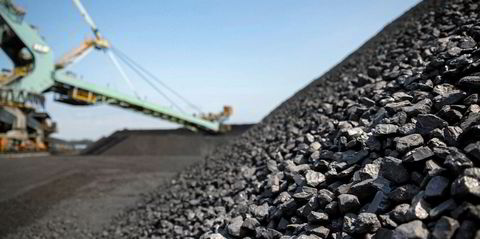All four major segments of dry bulk shipping posted their third consecutive week of steady declines.
The Baltic Exchange’s Capesize 5TC, a basket of spot-rate averages across five key routesm plummeted 33.7% over the past week to reach $9,254 per day on Friday. The figure marks its lowest level since early March and a 54.6% drop since 12 May.
Capesize spot fixtures over this three-week period painted a clear picture of the steady fall in the market.
BHP hired an unnamed capesize on Thursday to ship 160,000 tonnes of iron ore from Port Hedland, Western Australia, to Qingdao, China, at $7.55 per tonne. Loading is slated for 16 to 18 June.
The freight rate is considerably lower than the $8.40 per tonne that Rio Tinto paid on 12 May to ship 170,000 tonnes of the same commodity on a similar route from Western Australia’s Dampier to Qingdao, with loading from 12 to 14 June.
Drastic declines in average spot rates for multiple benchmark routes fuelled the capesize sector’s free fall during these periods.
The average spot rate for the roundtrip C14 iron ore route between Brazil and China dropped 15% over the past seven days and 41% during the last three weeks to just over $10,700 per day on Friday.
The average rate for the round-trip C10 iron ore route between Australia and China cascaded 22.4% since last Friday and 37.8% since 12 May to $11,300 per day on Friday, exchange data showed.
But the average spot rate for the round-trip C8 transatlantic route between South America and Europe fell the most, diving 67.9% since last Friday and 80.3% in three weeks to $5,088 per day on Friday due to plentiful coal in Europe.
Dry bulk shipping sentiment probably ran too high this past winter around China’s lifting of its zero Covid-19 policy, said Joakim Hannisdahl, founder and chief executive of Gersemi Asset Management.
“I was baffled by the seemingly optimistic expectations for the first half of 2023,” he said.
“My investment thesis has always been for the China story to unfold from the second half of 2023 and beyond, as it takes some time for government stimuli to affect demand for commodities and for the economy to stabilise.”
But he said he expects the dry bulk market to strengthen by the end of this year due to the Sino-centric demand picture and historically low orderbook.
“Yes, we are seeing some headwinds at the moment, but I believe that the tailwinds could be here well in time for the new year celebrations,” he said.
Average spot rates for the smaller bulkers also fell steadily during both periods, but not as sharply.
The Panamax 5TC slid 8% over the past week and 26.5% in the last three weeks to $9,269 per day on Friday, while the Supramax 10TC declined 13.5% since a week ago and 25.9% since 12 May to $9,011 per day, according to Baltic Exchange Data.
The Handysize 5TC slipped 7.4% since last Friday and 25.9% over the past three weeks to $9,805 per day on Friday.
The futures market supported Hannisdahl’s prediction for better days in dry bulk shipping during the second half.
Second-quarter contracts for capesizes added $893 per day on Friday to average more than $15,500 per day, while contracts for panamaxes in the same period added $950 per day to average nearly $12,000 per day.






